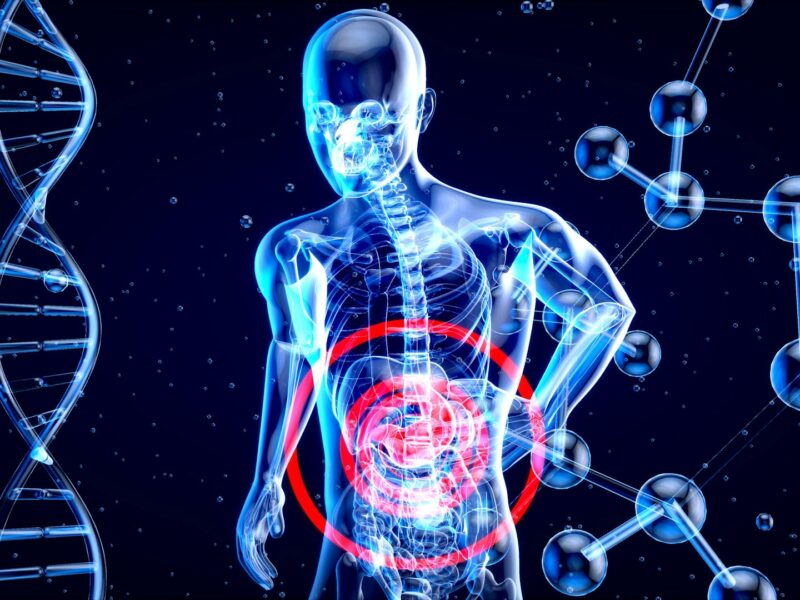In the United States, it is estimated that 1.6% of adults in the U.S. are transgender or nonbinary. These individuals may seek to adapt their physical forms to match their gender identity as opposed to their typical sex.
Among the numerous procedures that transgender individuals may undergo are FTM bottom growth injections. These need to be administered by a medical professional to be both safe and effective. So, it’s worth learning more about testosterone and how it can benefit those who undergo this procedure.
Read on to learn more about this hormone and how it can play a major role in helping you undergo this procedure successfully.
Contents
- 1 Understanding the Basics: Testosterone and its Effects
- 2 Hormonal Transition: The Journey of FTM Individuals
- 3 FTM Bottom Growth: Navigating the Changes
- 4 Navigating Challenges: Hormonal and Emotional Considerations
- 5 Beyond Physical Changes: The Psychological Impact
- 6 Celebrating Diversity and Empowerment
Understanding the Basics: Testosterone and its Effects
Before we dive into the specifics of FTM bottom growth, let’s take a moment to understand what testosterone is and how it functions in the body.
What is Testosterone?
Testosterone is a hormone that affects sex. It is mainly made in testicles for men and ovaries for women. It’s also made in the adrenal glands. It belongs to a class of hormones called androgens, which are responsible for the development of male characteristics.
Testosterone in an FTM body helps develop masculine physical traits like facial hair and muscle growth. It also contributes to bone density, male fertility, libido, and overall health.
Effects of Testosterone: Beyond the Obvious
Testosterone is often linked to masculine characteristics like facial hair and a deeper voice. It also affects muscle mass and has other unseen impacts. Testosterone is important for our body and mind. It affects our mood, energy, and bone strength.
Testosterone can also have a significant impact on libido, fertility, and overall health. Here’s what you need to know about the effects of testosterone:
Hormonal Transition: The Journey of FTM Individuals
For individuals who identify as female-to-male (FTM), testosterone is an integral part of their transition to male. Low testosterone therapy, also known as ‘Low T’, helps people reach their desired physical and emotional goals.
Keep in mind that hormone therapy is only part of a larger process. This process involves self-discovery, social transition, and sometimes medical interventions.
Embracing Identity: The Decision to Transition
Many people who were assigned female at birth choose to transition due to personal, social, and medical reasons. During the journey, the hormonal transition is often important. It involves taking testosterone to develop male characteristics.
Initiating Hormonal Therapy
When FTM individuals opt for low testosterone treatment in Pittsburgh, they typically receive testosterone through injections, patches, gels, or pellets. This introduces exogenous testosterone into the body, leading to a range of physical changes over time.
The effects of hormone therapy can vary from person to person, and not everyone will experience the same degree of bottom growth. The pace and extent of these changes can differ among individuals.
What is FTM Bottom Growth?
FTM bottom growth refers to the enlargement of the clitoris, a part of the female anatomy, in response to testosterone therapy. Please note that this process is different from male penis development. It involves the growth and increased sensitivity of clitoral tissue.
Biological Mechanisms at Play
The clitoris and the penis share a common embryonic origin, and both are sensitive to androgens like testosterone. The clitoris changes when there is more testosterone. It gets more blood flow, grows tissue, and becomes more sensitive. This process is gradual and varies from person to person.
Personal Experiences: Diverse Narratives
It’s crucial to recognize the diversity of experiences within the transgender community. Some people may notice bottom growth soon, while others may see changes happen slowly. These variations come from:
- Genetics
- Testosterone dosage
- Individual response to hormones
Additionally, some may experience dysphoria or anxiety during the transition process. It’s important to recognize that everyone has a unique and valid story.
Resource Support
Transitioning requires patience, care, and research. Many resources can help people who are transitioning or thinking about it. In addition to education about hormones, it is also important for those in transition to find a support system. During the transition period, it can be comforting and helpful to connect with other transgender people. It can be done in person or through online forums.
Dealing with the hormones and emotions of FTM bottom growth is a personal and complicated process. It’s important to recognize that each individual’s experience is unique. What works for one person may not work for another. Here are some considerations to keep in mind:
Managing Expectations
People in hormonal transition should be aware of the effects of testosterone therapy, including FTM bottom growth. To handle the feelings during this journey, understand that changes take time and manage your expectations.
Physical and Emotional Well-being
While FTM bottom growth is a significant aspect of transitioning, it’s vital to emphasize overall well-being. To take care of transgender individuals, it’s important to have regular check-ups and talk openly about physical changes. It’s also important to address their emotional concerns.
Beyond Physical Changes: The Psychological Impact
FTM bottom growth involves more than just physical changes; it also has psychological and emotional aspects to consider. Here are some key points to explore:
Empowerment and Affirmation
FTM bottom growth can be a source of empowerment and affirmation for many transgender individuals. It matches how they see themselves and helps them feel connected inside and out.
But it’s also important to recognize the mental challenges that can happen during this. Some individuals may grapple with the following:
- Body image concerns
- Societal expectations
- Interpersonal dynamics
Getting mental health support, like therapy and being part of a community, is important for dealing with these issues.
Celebrating Diversity and Empowerment
In conclusion, the role of testosterone in FTM bottom growth is crucial for many transgender men. Testosterone helps muscles grow. It also changes genital tissue, making someone look more masculine. This can make them feel better about their gender.
If you’re thinking about testosterone therapy, talk to a healthcare provider for personalized advice. Remember, everyone’s journey is unique, and the most important thing is to feel comfortable and confident in one’s body.
Whatever the question may be, we’re your source for all the answers. Check out our blog to discover even more insightful and informative content today!



